Most sheep are big, but what about the largest sheep? Imagine the size of the wool that they carry, it is a lot. Today we are going to talk about some of the largest sheep in the world. We will discuss their basic information about with some interesting things about them. In case you like sheep, this is the article for you. Let’s see which one is the biggest and which one that you like the most.
10Jacob Sheep

Average Height: 45 – 60 centimeters (18 – 24 inches)
This is a domestic British sheep breed that combines two characteristics that are unusual in sheep. Jacob sheep is piebald, meaning it is dark-colored with areas of white wool on its body. Another unique characteristic is the fact that both sexes commonly have four horns but the rams have larger and more impressive horns. Depending on the individuals, some can have just two while others possess up to 6 horns in total. The horns are balanced and smooth with black color but maybe black and white striped. Their horns are strongly attached to the skill, and grow in a manner that does not impede their sight or grazing abilities.
Jacob sheep have slender and triangular heads without wool forward of the horns and on the cheeks. Both ewes and rams have long body frames with a straight back and a rump that slopes toward the base of the tail. Jacob sheep have long and woolly tails that extend almost to the hock of their legs. Speaking of legs, their legs are medium-length and slender without wool below the knees. For centuries, the Jacob sheep was kept as a “park sheep” to ornament the large estates of landowners. Today, this breed serves different purposes which are for meat, skins, and wool. Just like many ancient sheep breeds, this one is also docile and kind to be around.
9Beltex
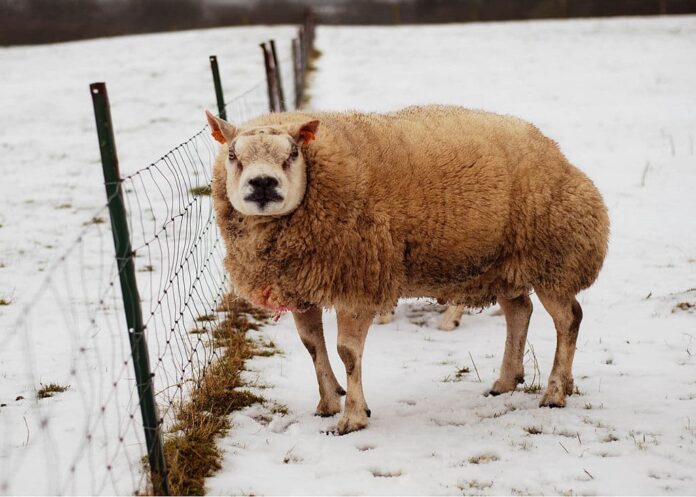
Average Height: 50 – 60 centimeters (19 – 23 inches)
Originating from Belgium, the Beltex sheep is a domestic sheep breed that is a portmanteau of Belgium and Texel. The Beltex sheep are hardy and strong animals with amazing adaptability to local climates. This breed was primarily used as a terminal sire in Europe where ewes are for producing lamb for meat. Today, the sole purpose of raising this breed is for meat production along with wool. At a glance, Beltex looks quite stout and short but it is one of the largest sheep with double-muscled hindquarters and fine bones. Despite their muscled legs, Beltex sheep actually have small skeletons. These features also make them one of the breeds that produce large quantities and high qualities of meat. In case you wonder, the prominent muscling is not present at birth. It only begins to grow soon after so delivering lambs is also not a challenge for the ewes.
8Racka Sheep

Average Height: 72 centimeters (28 inches)
Originally from Hungary since the 1800, Racka sheep is famous for its unusual spiral-shaped horns that look absolutely phenomenal. Both ewes and rams have long spiral-shaped horns that may grow up to 60 centimeters (20 inches) long. Racka sheep are medium-sized, and they often come in two major color patterns but the most common one is brown. Their brown wool covers their heads and legs with fiber varying in color from dark brown to light brown and white. In some cases, there are also Racka sheep that come in solid black color as well. Their double-coated wool is long, coarse, and curly which they shed annually. Apart from their beautiful appearance, Racka sheep are multipurpose animals that people use for meat, milk, and wool production. With an average milk yield of about 60 liters, no doubt why they are one of the common breeds for both commercial and non-commercial purposes.
7Gute
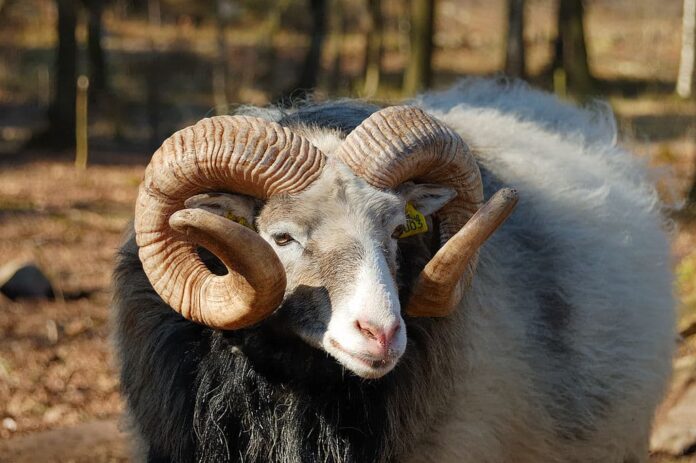
Average Height: 64 – 84 centimeters (25 – 33 inches)
Known as the true Viking sheep, Gute is a domestic and most primitive breed native to the Swedish island of Gotland. Both ewes and rams have horns along with fleece of many different colors and patterns in each individual. The most common color of Gute is gray, and they have tan and white hair on their head and legs. These sheep have coarse wool with a mixture of fine wool and kemp fiber that can be either straight or wavy. Males have long thick mane hair on the neck and along the throat while females also possess this with a lesser amount. This breed sheds their fleece once a year, typically in the summer months.
Being one of the largest sheep, size is not the only thing that this breed is famous for. Gute sheep are also seasonal breeders whose breeding season begins in late October and early November. The Gute sheep are raised mainly for genetic conservation, but they are also very active and hardy animals. Raising them is beneficial and easy, and these animals can live up to 12 years which is quite long. Hobby spinners are also fond of them due to their beautiful fiber and high quality wool for felting. Plus with the fact that they are fast growing, these sheep reach ideal slaughter size at between 5 to 7 months old. Their meat is delicious and mild, making them great food as well.
6Mouflon
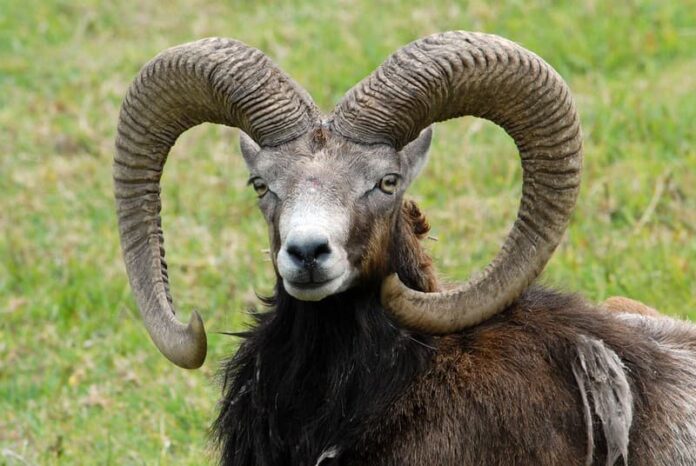
Average Height: 65 – 90 centimeters (25 – 35 inches)
Here we have a wild sheep native to the Caspian region that is thought to be the ancestor of all modern domestic sheep breeds. Mouflon has dark brown to reddish coats with short hair along with dark back stripes and light-colored saddle patches. The males have large spiral horns while females either have none or only very small ones. Their curvy spiral horns arch backward over the head, and the curve is almost one full revolution. On top of the horns, male mouflon has a larger and more robust body than females. Mouflon are also social animals with great abilities to hike and run in rocky and steep terrains when forced to flee. In the wild, they prefer to live in dry and open mountain spaces near woodland where they can access food.
As herbivores, mouflon feed on leaves, grass, and tender sprouts as well as acorns, barks, fruits, lichens, moss, and mushrooms. The unique thing about mouflon is that rams have a very serious dominance hierarchy where males compete with one another. Before mating season or rut, rams will try to establish their dominance to get access to ewes for mating. The males will fight each other, and the winners get the opportunity to mate with the females. Another fascinating thing is that the gestation period of females is only 5 months, and they give birth to one or two offspring. In the wild, their natural predators are wolves while eagles and lynxes prey on young lambs.
5Arapawa
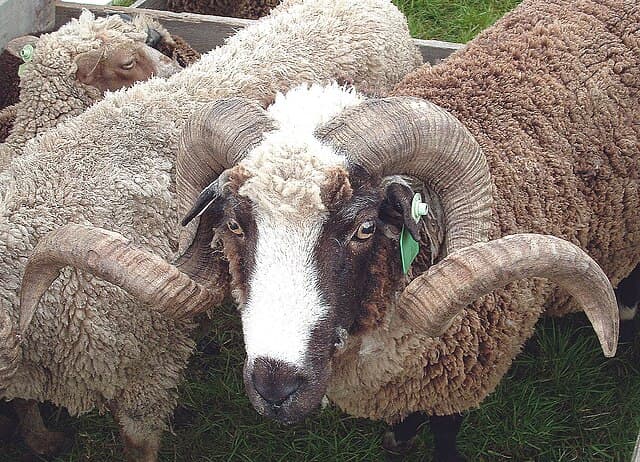
Average Height: 70 – 78 centimeters (27.5 – 30.7 inches)
Being one of the largest sheep, Arapawa sheep actually have a light build with long legs which make them quite active. This breed has narrow faces and heads with slender ears, and their fleece color is often all black. Black sheep with white spots are also common while all-white sheep of this breed do exist although very rare. Both sexes possess horns but the rams have longer spiral horns that grow as long as 1 meter (3 feet). This breed is primarily found on Arapaca Island in the Marlborough Sounds of New Zealand. In their natural habitats, they prefer living in hostile and very steep terrains. At the same time, they are very adaptive to their native environments as they are also hardy and strong. It is a feral sheep breed that provides high-quality wool, the very purpose they are for.
In New Zealand, Arapawa is one of the most popular animals for trophy hunting. Because they are one of the largest sheep with fascinating appearance, trophy hunters actually hunt them for their horns. In trophy hunting, the hunting guides judge them based on their horn mass and number of curls. Because they are among the intelligent animals that are quick on their feet, hunting them is quite common. According to New Zealand Safaris, the rams of this breed make an attractive trophy and a perfect way to end a big game hunt. Hunters mount their trophy sheep on their shoulders or have the taxidermist turn the ram into a full-body rug. Arapawa ram trophy hunting used to be common but overhunting in many countries caused a big decline in their population. Nowadays, New Zealand is one of the only places left where you can hunt this breed.
4Suffolk
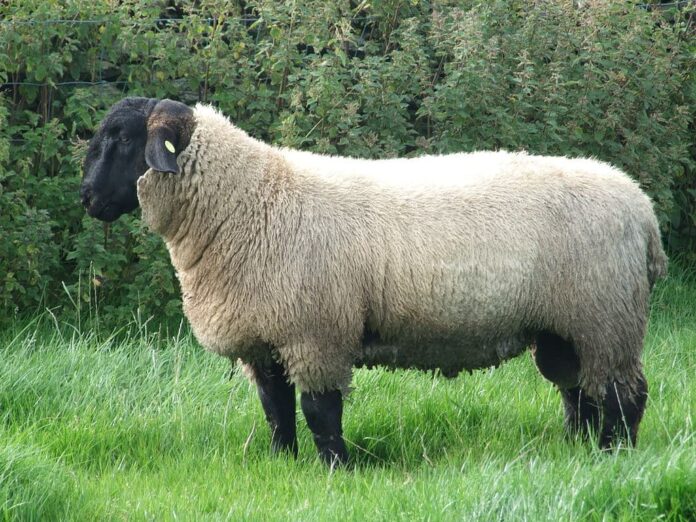
Average Height: 74 – 80 centimeters (29 – 31 inches)
Does this look familiar? If you are a fan of Shaun the Sheep, this is exactly the breed that you are looking at right now. Suffolk is one of the largest sheep breeds with a distinctive appearance that you can easily recognize. This British domestic sheep breed has a white body with a black face and legs, and both sexes are polled. Unlike the cartoon, Suffolk is actually raised primitive for its meat that is exported to many countries worldwide. The breed itself also goes to different countries such as Australia, Brazil, New Zealand, South Africa, the United States, etc. Because of that, Suffolk is one of the most numerous sheep breeds in the world.
A Suffolk has a large frame and muscular body, making it the ideal breed for meat production. How about its thick wool? Suffolks are also good for wool production but the main purpose to breed them is more for meat. The rams of this breed are commonly used as a sire in cross-breeding programs. This is because they imbue their lambs with lean and high-yield carcasses along with a rapid growth rate. Suffolk carcasses are easy to cut which is popular among diners who enjoy lean lambs. As for ewes, they have a strong maternal instinct and produce plenty of milk for their lambs and commercial use. Plus with the fact that Suffolks thrive in a wide range of climates, this is why they are so popular.
3Border Leicester
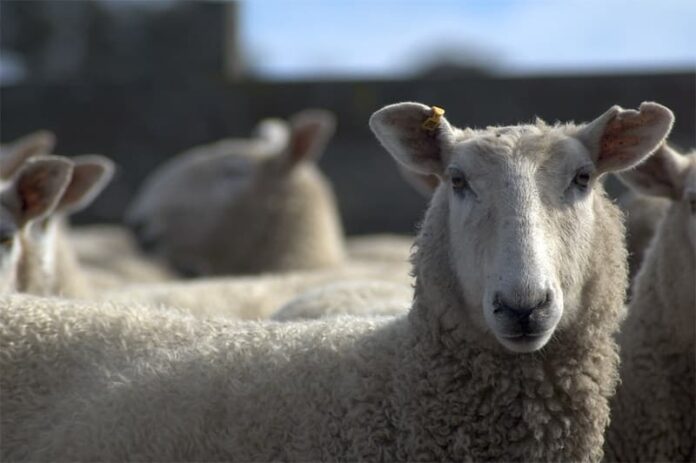
Average Height: 81 centimeters (32 inches)
Border Leicester is the largest indigenous breed in the British Isles and one of the largest sheep in the world. As you can see, this breed has a very elegant appearance along with attractive characteristics as well. Each of them has long cute ears that stay up along with an arched Roman nose. They have white bodies covered with wool but not on their heads and legs. Such striking appearance also makes them popular in the show ring apart from being helpful on the farm. Another important thing about them is that they are also an ideal breed for cross-breeding to increase production. The females’ fertility is very efficient, allowing them to not only give birth to prime lamb dam but also produce a lot of milk.
Border Leicester is actually famous for its robustness and ability to grow and mature rapidly. The special thing about border Leicester is that it is just perfect for all farming systems. These sheep are large but docile, and the females are amazing mothers who produce good milk and quality lambs. Along with that, this breed is also hardy which makes them easy to keep and manage. At the same time, this breed deliver high-quality meat and wool (twice) annually to a wide range of regions. They have long white wool that is ideal for spinners due to the crimp and luster features. Thanks to its versatility, this breed is ideal for both commercial farmers and meat production for butcher trades and niche markets. It has longer loin and leaner meat compared to other sheep of the same size.
2Lincoln Sheep
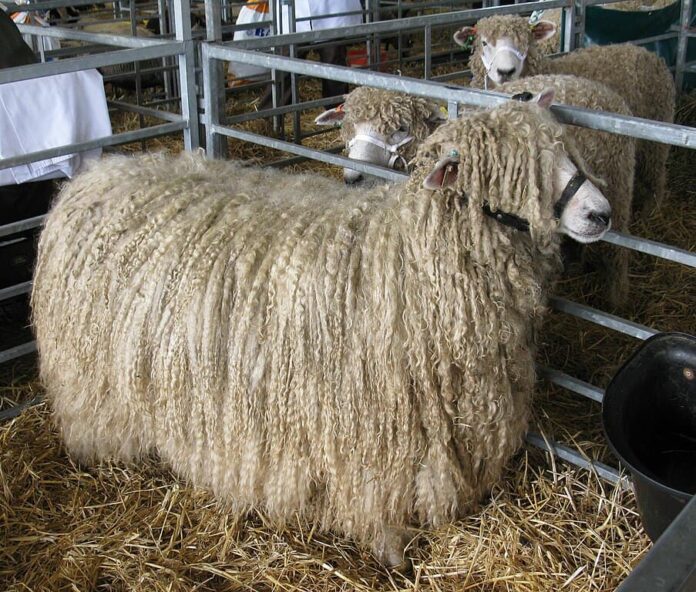
Average Height: 80 – 81 centimeters (31 – 35 inches)
The list of the largest sheep is incomplete without the presence of The Lincoln or Lincoln Longwool from England. It is one of Britain’s largest sheep that is developed specifically to produce the heaviest, longest, and most lustrous fleece. Their fleece is usually in heavy locks that twist into a spiral near the end. The fleece that the Lincoln produces is not only high quality but also in great numbers. More than that, huge numbers of these sheep are also being exported to many countries. This is to improve the size and wool quality due to the great demand of their fleece for, spinning, weaving, etc. Currently, Lincoln sheep is available in many countries throughout the world from Australia to Europe and South America.
Lincoln sheep can be completely white, but they also come in a shade of black, charcoal, gray, and silver. Besides wool production, people also raise them for meat due to their large size and high quality meat. This breed also has a fine tasting meat that is very lean and succulent. On top of that, Lincoln sheep are sturdy but docile which makes them so easy to care for. Not to mention that they have incredible adaptability to live in both cold and dry conditions, so raising them is also easy. Plus with the fact that lambs are relatively fast growers, the production of their meat is also fast. So beneficial in so many ways, and this is why this breed is among the most popular among breeders.
1Argali
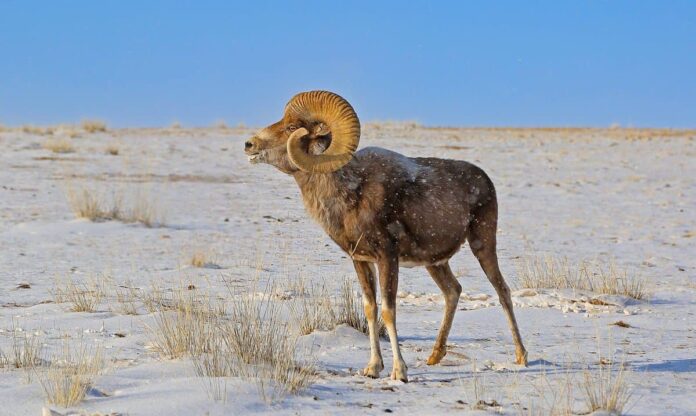
Average Height: 85 – 135 centimeters (3 – 4 feet)
Argali is the largest living wild sheep that can grow as tall as 135 centimeters (4 feet) tall. This breed is native to the highlands of Central Asia where their name literally means “wild sheep” in Mongolian. There are 9 argali subspecies in total, and their habitats range from extreme arctic and alpine tundra to grassy mountains. The general coloration of this breed ranges from dark gray-brown and reddish-brown to light yellow. Both ewes and rams have horns, but the males have longer horns than the females. Pamir Argali or Marco Polo Argali is the most famous subspecies with the longest horns that measure over 190 centimeters long.
The rams use their long and massive horns to compete with one another while females have smaller horns. Adult male and female argali sheep live in separate herds except during the brief mating season. Although argali sheep have long legs and are good at running, they still cannot escape the threats to their lives. As the world’s largest sheep, many trophy hunters seek to hunt them has been going on for years. Argali is considered a near threatened species due to domestic livestock ranching, habitat loss, and hunting for horns and meats. Another main threat is poaching them for their horns to use in traditional Chinese medicines.
Related Post: Dangerous Goat Breeds To Keep A Distance From



